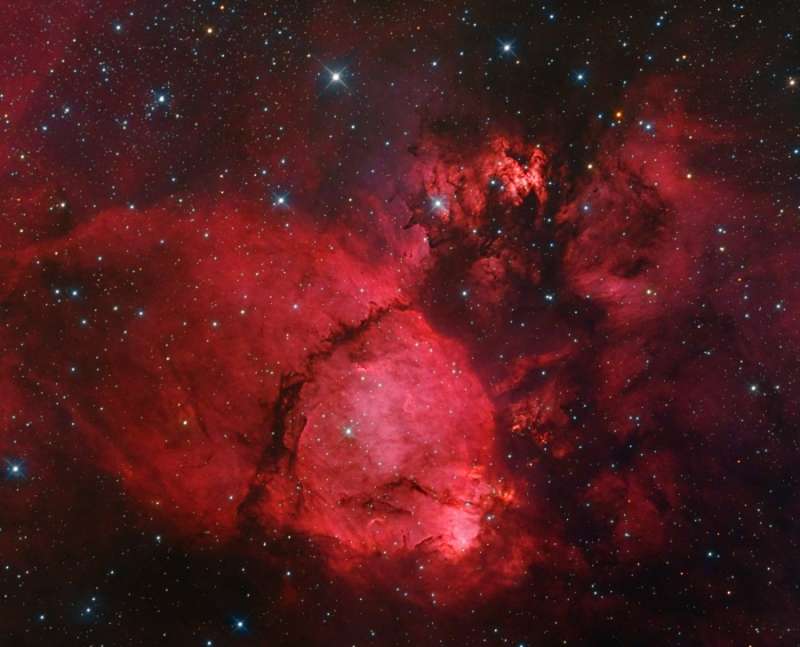Credit & Copyright: Bob and Janice Fera
(Fera
Photography)
Explanation:
This
sharp cosmic portrait features
glowing gas
and obscuring dust clouds in IC 1795,
a star forming region in the northern constellation
Cassiopeia.
Also cataloged as NGC 896, the nebula's remarkable details,
shown in its dominant red color,
were captured using a sensitive camera,
and long exposures that include image data from a narrowband filter.
The narrow filter transmits only
H-alpha light,
the red light of hydrogen atoms.
Ionized by ultraviolet light from energetic
young stars, a hydrogen atom emits the characteristic H-alpha light as
its single electron is recaptured and transitions to lower energy
states.
Not far on the sky from the famous Double Star
Cluster in Perseus, IC 1795 is itself located next to IC 1805,
the Heart Nebula, as part of a
complex
of star forming regions that lie
at the edge of a large molecular cloud.
Located just over 6,000 light-years away, the larger
star forming complex sprawls along the Perseus spiral arm of
our Milky Way Galaxy.
At that distance, this picture would span about 70 light-years
across IC 1795.
1999 2000 2001 2002 2003 2004 2005 2006 2007 2008 2009 2010 2011 2012 2013 2014 2015 2016 2017 2018 2019 2020 2021 2022 2023 2024 2025 |
Yanvar' Fevral' Mart Aprel' Mai Iyun' Iyul' Avgust Sentyabr' Oktyabr' Noyabr' Dekabr' |
NASA Web Site Statements, Warnings, and Disclaimers
NASA Official: Jay Norris. Specific rights apply.
A service of: LHEA at NASA / GSFC
& Michigan Tech. U.
|
Publikacii s klyuchevymi slovami:
H-alpha - star formation - nebula - vodorod - tumannost' - zvezdoobrazovanie
Publikacii so slovami: H-alpha - star formation - nebula - vodorod - tumannost' - zvezdoobrazovanie | |
Sm. takzhe:
Vse publikacii na tu zhe temu >> | |
